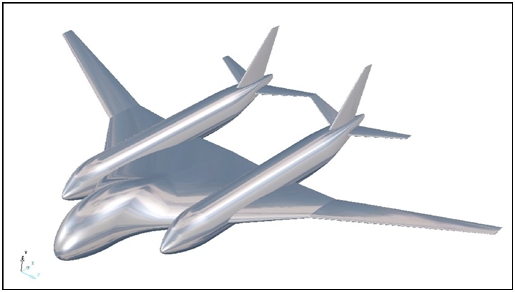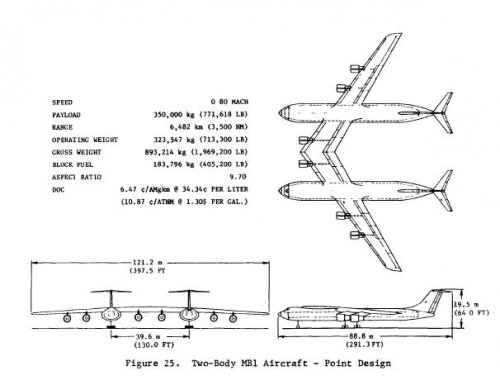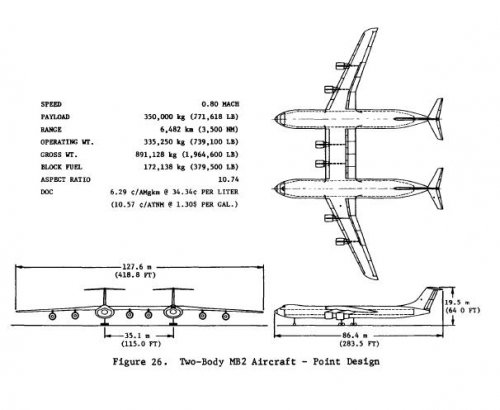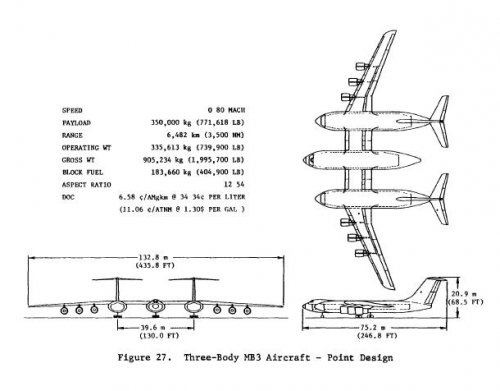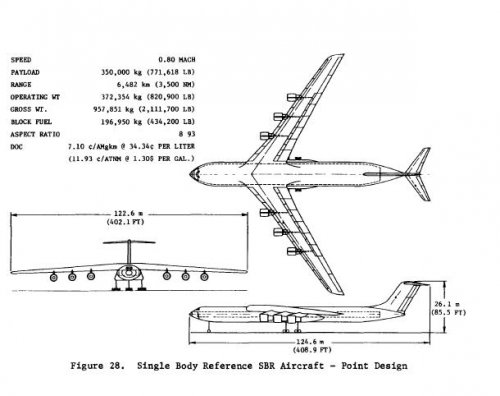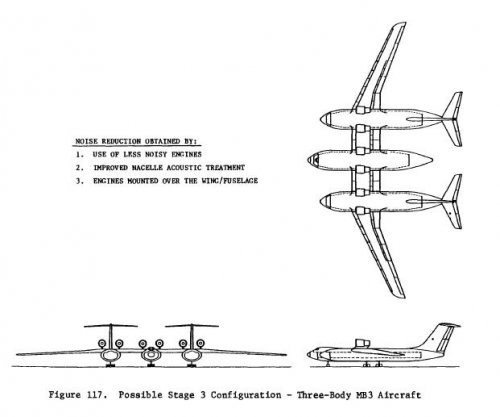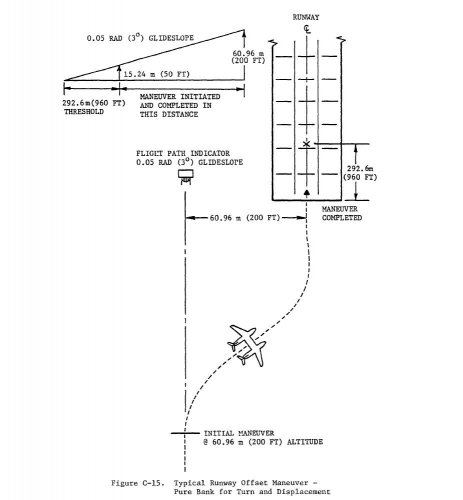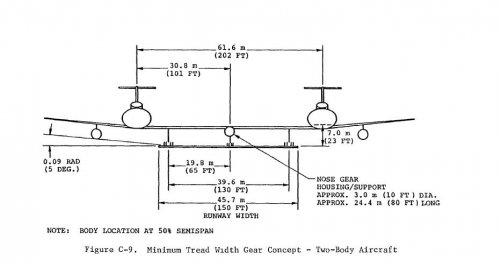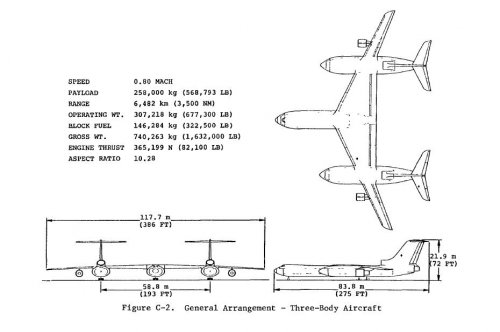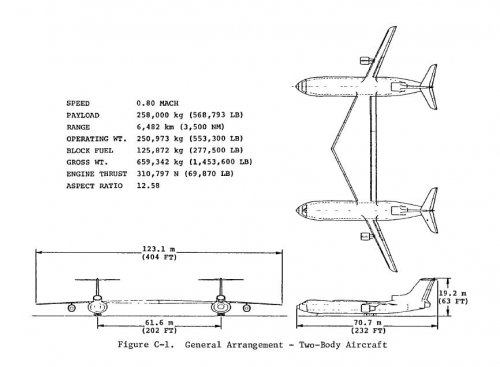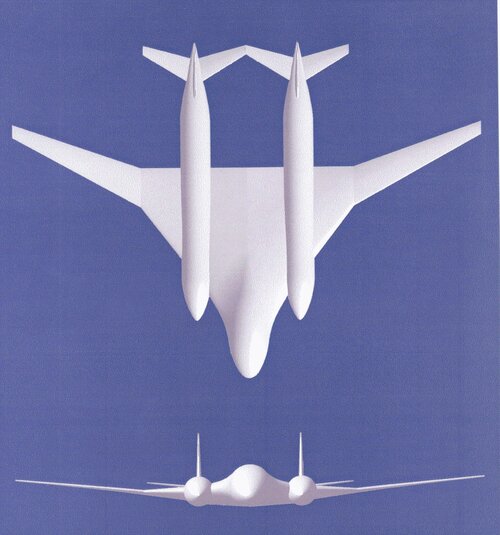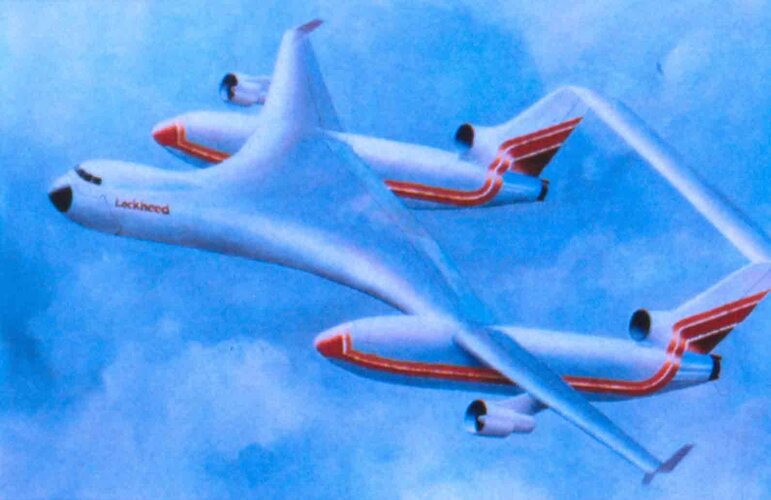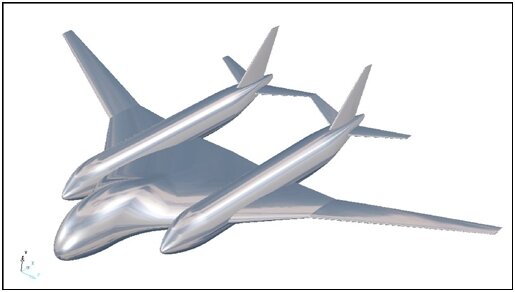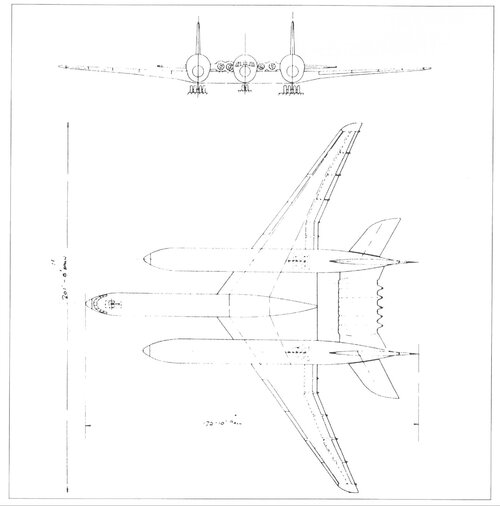You are using an out of date browser. It may not display this or other websites correctly.
You should upgrade or use an alternative browser.
You should upgrade or use an alternative browser.
Multibody aircraft studies
- Thread starter Simon666
- Start date
ford_tempo
ACCESS: Confidential
- Joined
- 31 January 2011
- Messages
- 78
- Reaction score
- 8
Hi
Here is a study about multibody aircraft projects (with 2 and 3 fuselages)
http://ntrs.nasa.gov/archive/nasa/casi.ntrs.nasa.gov/19820024468_1982024468.pdf
I have extracted 3 pages with line drawings and basic specifications form this very long report.
Best
f_t
Here is a study about multibody aircraft projects (with 2 and 3 fuselages)
http://ntrs.nasa.gov/archive/nasa/casi.ntrs.nasa.gov/19820024468_1982024468.pdf
I have extracted 3 pages with line drawings and basic specifications form this very long report.
Best
f_t
Attachments
- Joined
- 26 May 2006
- Messages
- 32,646
- Reaction score
- 11,828
- Joined
- 25 June 2009
- Messages
- 13,746
- Reaction score
- 2,931
A somewhat uneducated question, perhaps, but isn't there a structural advantage to join the tails of a twin-fuselage design rather than leave them separate? I would imagine that unjoined tail units would increase the risk of warping. If anyone knows the answer and can explain it in simple terms, I'm really interested to know about it!
- Joined
- 30 November 2007
- Messages
- 1,089
- Reaction score
- 429
Another uneducated question; what kind of airport runway/taxiway infrastructure was proposed to support such designs?
Terry (Caravellarella)
Terry (Caravellarella)
Moore, JW et al., Multibody Aircraft Studies Volume II Appendixes Lockheed-Georgia Company, July 1982
Abstract:
http://ntrs.nasa.gov/archive/nasa/casi.ntrs.nasa.gov/19820024469_1982024469.pdf
Abstract:
The purpose of this report is to quantify and provide technical substantiation of the potential benefits of a multibody aircraft when compared to a single body aircraft. The analyses consist principally of a detailed point design analysis of
three multibody and one single body aircraft, based on a selected payload of 350,000 kg (771,618 lb), for final aircraft definitions; sensitivity studies to evaluate the effects of variations in payload, wing semispan body locations, and fuel price;recommendations as to the research and technology requirements needed to validate
the multibody concept.
Two, two-body, one, three-body, and one single body aircraft were finalized for the selected payload, with DOC being the prime figure-of-merit. When compared to the single body, the multibody aircraft showed a reduction in DOC by as much as 11.3 percent. Operating weight was reduced up to 14 percent, and fly-away cost reductions ranged from 8.6 to 13.4 percent.
Weight reduction, hence cost, of the multibody aircraft resulted primarily from the wing bending relief afforded by the bodies being located outboard on the wing. Wind tunnel tests and flight simulation are recommended so as to better understand the aerodynamic characteristics in order to assure an acceptable level of risk in the design and development of a large multibody aircraft. For this same reason, further structural investigations are required in such areas as dynamic loads, load alleviation, unsymmetrical loadings, flutter, and material application.
http://ntrs.nasa.gov/archive/nasa/casi.ntrs.nasa.gov/19820024469_1982024469.pdf
Attachments
- Joined
- 1 April 2006
- Messages
- 10,719
- Reaction score
- 6,685
15 years after I can say that this weirdo is TsAGI designAnyone got more info on this kind of hybrid design?

he second NACRE (New Aircraft Concepts Research) Conference
fseg.gre.ac.uk

